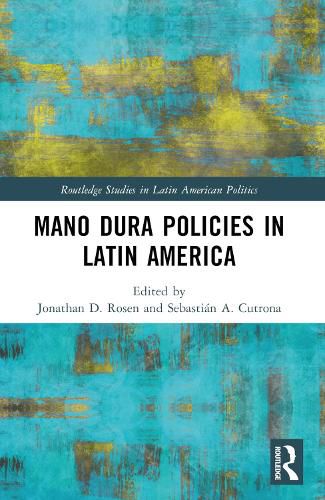Readings Newsletter
Become a Readings Member to make your shopping experience even easier.
Sign in or sign up for free!
You’re not far away from qualifying for FREE standard shipping within Australia
You’ve qualified for FREE standard shipping within Australia
The cart is loading…






Leading scholars and policy analysts from around the Americas come together to untangle the factors that have fuelled the implementation of mano dura politics, their rising popularity, and impacts across nine widely heterogeneous countries in Latin America.
Beginning with a discussion on the concept of mano dura, the editors move to survey various theoretical approaches to punitivism, and later review of the empirical research evaluating different drivers behind the adoption of tough on crime policies. Since hard-line initiatives often have consequences beyond the general goal of reducing violence, they then analyze the impacts of these policing strategies on crime rates and different democratic institutions. Country chapters on Mexico, El Salvador, Honduras, Guatemala, Colombia, Ecuador, Bolivia, Brazil, and Argentina follow a common thematic structure to answer the following questions:
What are some of the trends in gangs, organized crime, and violence? How have governments responded to combat crime and violence? What factors have fuelled the implementation of mano dura policies? Why are mano dura policies popular? What have the consequences of these policies been?
Mano Dura Policies in Latin America is essential reading to students of Latin American studies, political science, public policy, and criminal justice. It will also interest scholars working on drug trafficking, organized crime, and violence in Latin America.
$9.00 standard shipping within Australia
FREE standard shipping within Australia for orders over $100.00
Express & International shipping calculated at checkout
Leading scholars and policy analysts from around the Americas come together to untangle the factors that have fuelled the implementation of mano dura politics, their rising popularity, and impacts across nine widely heterogeneous countries in Latin America.
Beginning with a discussion on the concept of mano dura, the editors move to survey various theoretical approaches to punitivism, and later review of the empirical research evaluating different drivers behind the adoption of tough on crime policies. Since hard-line initiatives often have consequences beyond the general goal of reducing violence, they then analyze the impacts of these policing strategies on crime rates and different democratic institutions. Country chapters on Mexico, El Salvador, Honduras, Guatemala, Colombia, Ecuador, Bolivia, Brazil, and Argentina follow a common thematic structure to answer the following questions:
What are some of the trends in gangs, organized crime, and violence? How have governments responded to combat crime and violence? What factors have fuelled the implementation of mano dura policies? Why are mano dura policies popular? What have the consequences of these policies been?
Mano Dura Policies in Latin America is essential reading to students of Latin American studies, political science, public policy, and criminal justice. It will also interest scholars working on drug trafficking, organized crime, and violence in Latin America.